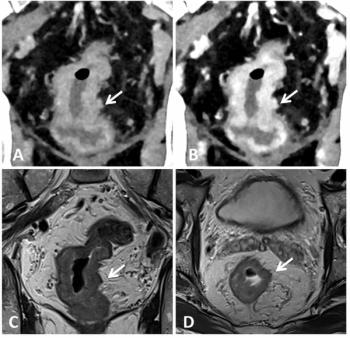
MRI study shows reduced brain atrophy in treated MS patients
Therapeutic treatment in the very early stages of multiple sclerosis can help patients reduce brain tissue loss and maintain function. Brain atrophy is a common symptom in the relapsing-remitting form of the disease.
Therapeutic treatment in the very early stages of multiple sclerosis can help patients reduce brain tissue loss and maintain function. Brain atrophy is a common symptom in the relapsing-remitting form of the disease.A five-year MRI study led by Dr. Omar Khan, a professor of neurology and director of the Multiple Sclerosis Center at Wayne State University in Detroit, has demonstrated that patients receiving glatiramer acetate experience significantly less brain tissue loss compared with those receiving other disease-modifying therapies. Dr. Khan and colleagues examined patients with low disability scores (3 or less according to the Expanded Disability Status Scale). Glatiramer acetate, marketed as Copaxone by Teva Pharmaceutical Industries, was given to 121 patients, while 101 received high-dose interferon-β (HD IFNB) treatments and 53 received low-dose interferon-β (LD IFNB) treatments. Doctors performed brain MR on a 1.5T scanner at the outset of the disease-modifying therapies and then five years later.
Results revealed that the mean annualized rate of brain atrophy (ARBA) was significantly reduced in patients receiving glatiramer acetate compared with those on high-dose or low-dose interferon-β. After five years, ARBA was:
- −0.46% for glatiramer acetate patients
- −0.52% for the HD IFNB group
- −0.64% for those on LD IFNB
The control group that received no disease-modifying therapy had the highest rate of brain atrophy with an ARBA of −0.95%.
The researchers presented their results in April at the American Academy of Neurology meeting in Chicago. In previous short-term studies, scientists have faced confounding factors when using MR scans to study brain atrophy. A major problem came from falsely interpreting edema as actual brain volume. "In the short term, inflammation is reduced immediately after the application of these therapies," said Dr. Denisa Hurtukova, medical director for MS products at Teva Neuroscience. "You see a reduction of edema or swelling in the brain, and it appears as if the brain volume has decreased. But this is not atrophy or true tissue loss. This is a pseudo phenomenon that occurs in the short term after anti-inflammatory therapy."To correct for this pseudo-atrophy, Khan and his colleagues used Structural Image Evaluation of Normalized Atrophy (SIENA) software, a fully automated imaging technique specifically designed to measure brain volume changes in MS patients with greater accuracy."The study also demonstrated that brain atrophy is a dynamic process that can be detected in mildly affected early MS patients," Khan said. "Therefore, in accordance with national MS Society recommendations, it is important to initiate therapy soon after the diagnosis of MS is confirmed."In addition to MRI with SIENA, Hurtukova sees great potential of more nonconventional MRI techniques for assessing changes in normal-appearing brain tissue. She cites proton MR spectroscopy, magnetization transfer imaging, and diffusion tensor imaging as methods that can have greater diagnostic value than standard MRI. She expects to see these techniques used increasingly in upcoming clinical MS trials. For more information from the Diagnostic Imaging archives:
T1-weighted MRI identifies signs of multiple sclerosis
7T MR excels in MS detection
3T MR improves multiple sclerosis assessment
Newsletter
Stay at the forefront of radiology with the Diagnostic Imaging newsletter, delivering the latest news, clinical insights, and imaging advancements for today’s radiologists.



























